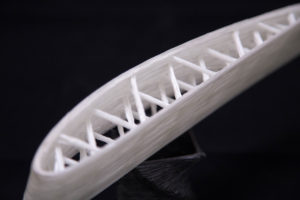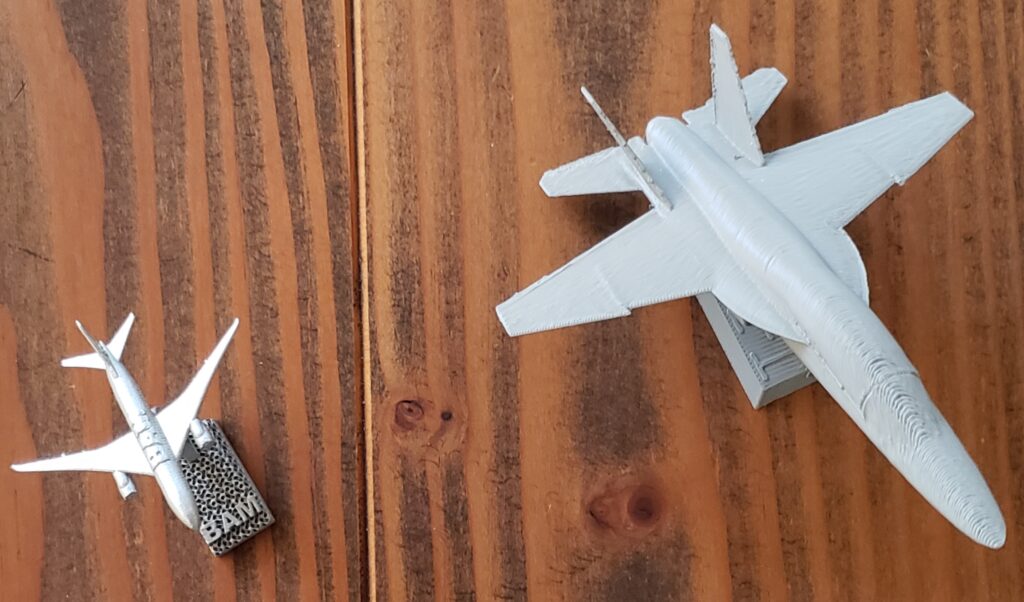Leeham News and Analysis
There's more to real news than a news release.
Leeham News and Analysis
- Air India Flight 171 Preliminary Crash Report Is Unclear Regarding Pilot Actions
- Bjorn’s Corner: Air Transport’s route to 2050. Part 30.
- It’s official: MTU’s engine leader named CEO of Airbus Commercial from Jan. 1; future of Open Fan and A220-500 shifts to him
- Embraer E2: Where will the orders come from?
- US Transpo Secretary supports zero tariffs on aerospace, but change isn’t assured
Boeing shows off new Additive Manufacturing facility, a key to future aerospace
By Scott Hamilton
Sept. 28, 2022, © Leeham News: Boeing last week officially celebrated the opening of its Boeing Additive Manufacturing plant (BAM) in the small suburb of Algona (WA), east of Tacoma.
BAM opened just at the start of the COVID-19 pandemic in March 2020. But ceremonies were postponed until now.
Additive manufacturing (AM) is not new to Boeing. It’s been doing AM in various forms for 30 years. But increasingly, companies are turning to AM to reduce costs and production time. Also known as 3D printing, companies are using AM for tooling, parts, and small components from civil and commercial aviation to defense and space programs. Parts are used on airplanes, drones, and spacecraft.
Many homes and non-aerospace businesses have 3D printers. Some are for business and others are for hobbyists. As part of a media and VIP tour last week, guests received gifts of two small airplanes created by 3D printing, one metal, and one plastic (plus a box of two chocolates, not made by AM, but the real thing).
Posted on September 28, 2022 by Scott Hamilton
Boeing needs 737 replacement launch by 2026 if not sooner
Subscription Required
By Scott Hamilton
Introduction
Nov. 9, 2020, © Leeham News: Boeing needs hundreds of new orders for the 737 MAX and/or a new replacement program launch by 2026, if not sooner.
An analysis shows that 737 deliveries tank by 2028.
This isn’t just about the 737-10 and 737-9, which don’t fare well against the Airbus A321neo. The shrinking backlog is the problem.
Ryanair’s CEO, Michael O’Leary, said last week Boeing will delay delivery/entry into service of the 737-10 MAX by up to two years.
This largely stated the obvious.
The first 10 MAX rolled out of the factory Nov. 22 last year. It could not enter flight testing because the MAX family was grounded March 13. The MAX remains grounded. Recertification may come this month, but it appears more likely next month.
This delays the start of flight testing until probably January. This is a 14-month delay.
Flight testing will take a year to 15 months, or to January to March 2022—about two years after the planned EIS. Boeing’s production ramp up will further impact delivery of the 10 MAX.
Although some recent new focus was on the 10 MAX, the larger issue is the entire 737 family.
Summary
- Production ramp up will be slow.
- Inventory will take two years to clear.
- Airline demand is poor the next 2-3 years.
- Boeing’s breadwinner sees major delivery drop from 2026.
- A further drop by 2028 demonstrates need for a 737 replacement—not just an A321 competitor.
Posted on November 9, 2020 by Scott Hamilton
Aviation Forum Munich: Boeing moves away from Partnership for Success
By Bjorn Fehrm
November 6, 2019, ©. Leeham News at Aviation Forum Munich: The second day of Aviation Forum Munich had an interesting presentation from Boeing’s VP of Sourcing, Jody Franich.
He described the One Boeing approach for Manufacturing and Sourcing and how Boeing is moving away from its supply chain Partnership for Success program, with the supplier cost down focus replaced by a more long-term cooperation model with a mutual benefit focus.
Posted on November 6, 2019 by Bjorn Fehrm
Aviation Forum Munich: Vertical integration on the way back
By Bjorn Fehrm
November 5, 2019, ©. Leeham News at Aviation Forum Munich: The Aviation Forum kicked off in Munich today, a yearly production and supply chain event started by the Hannover based Institute for Production Management nine years ago.
Today’s conference themes were How the OEMs benefit from Supplier Innovation, Additive Manufacturing trends and discussions around Outsourcing and Insourcing.
Read more
Posted on November 5, 2019 by Bjorn Fehrm
I-90 Conference: Additive manufacturing is about to change everything
By Bryan Corliss
June 5, 2019, © Leeham News, Coeur d’Alene (ID) — Within a decade, 3-D printing will begin to revolutionize the way companies fabricate and assemble aircraft–and just about everything else humans manufacture.
 That was the message delivered by panelists at the I-90 Aerospace Corridor Conference & Expo.
That was the message delivered by panelists at the I-90 Aerospace Corridor Conference & Expo.
The conference, for aerospace companies in eastern Oregon and Washington, northern Idaho and western Montana, was held May 27-28 in Coeur d’Alene (ID).
Companies are experimenting with the current generation of the technology now, said David Minerath, the president of Quest Integration, based in Post Falls (ID), whose company sells 3-D modeling and printing technology to manufacturers.
“We do have a lot of printers at aerospace companies, but they’re very sensitive about where these parts are going,” Minerath said.
Costs are coming down, he said. With units costing as little as $2,000 apiece, it’s possible for companies to stack five together in a room running parts.
“You’re getting close to low-rate production,” Minerath said.
And it’s easy, he said. “It’s like you’re doing ‘file, print’ to your laser printer.”
- “Additive” technology literally the opposite of current process
- Idaho company has patents on fast-curing process
- Will allow changes in how parts are produced and assembled
Posted on June 5, 2019 by Bryan Corliss
Additive manufacturing: Huge potential, big barriers
Subscription Required
Introduction
Part 1 appears here.
By Dan Catchpole
August 27, 2018, © Leeham News: For all its potential, additive manufacturing faces significant hurdles before it can deliver on advocates’ assertions that the technology will revolutionize the aerospace industry.
 United Technologies is counting on additive manufacturing, often called 3D printing, to help it develop and produce new components faster, better and cheaper. Paula Hay is leading the expansion of additive manufacturing at United Technologies Aerospace Systems (UTAS). In part two to last week’s interview with Hay, LNC talks to her about what problems have to be solved for additive manufacturing (AM) to make good on its potential.
United Technologies is counting on additive manufacturing, often called 3D printing, to help it develop and produce new components faster, better and cheaper. Paula Hay is leading the expansion of additive manufacturing at United Technologies Aerospace Systems (UTAS). In part two to last week’s interview with Hay, LNC talks to her about what problems have to be solved for additive manufacturing (AM) to make good on its potential.
Summary
- Need more consistent materials and equipment.
- OEMs and regulators have to develop AM standards.
- Design culture has to evolve to reflect AM capabilities.
UTC Aerospace Systems sees big benefits from additive manufacturing
Subscription Required
Introduction
By Dan Catchpole
August 20, 2018, © Leeham News: There is a fundamental tension in aerospace’s DNA.

UTC Aerospace Systems’ executive Paula Hay is leading the aerospace supplier’s adoption of additive manufacturing. (Image via LinkedIn)
It has been there since Kitty Hawk: Balancing the hunger to push technological boundaries with the desire to stay safe.
The Wright Flyer only flew after years of painstakingly testing airframes and engines. That tension between being bold and being safe is evident today in commercial aerospace’s adoption of additive manufacturing.
Just about every major player in the aerospace industry is exploring additive manufacturing, or 3D printing. Most of the integration has been at the margins. The technology is still young enough that there is no clear leader in its application to aerospace. Everyone is trying to find how to get the most from it.
Summary
- Begin with mechanical, not structural systems.
- Big parts reductions.
- Big reduction in lead time.
Posted on August 20, 2018 by Dan Catchpole





